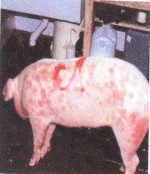
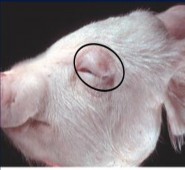
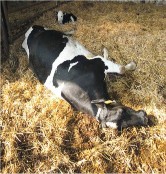
G H I
 J
J 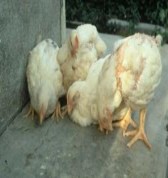 K
K 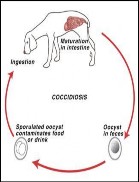 L
L
M 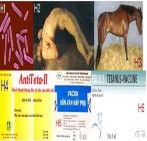 N
N 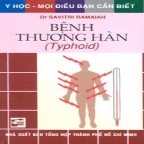 O
O
Exercise 2: Match the words in column A with their definitions in column B.
B | |
1. Distemper 2. Cataract 3. Pneumonia 4. Ringworm 5. Rabies 6. Erysipelas 7. Bacillus 8. Anthrax 9. Glanders 10. Tetanus | A. Disease of sheep and cattle transmissible to humans. B. Inflammation of one or both lungs C. Disease causing fever and a deep red inflammation of the skin. D. Contagious viral disease of esp. dogs, transmissible through saliva to humans etc. and causing madness; hydrophobia. E. Bacterial disease causing painful spasm of the voluntary muscles. F. Rod-shaped bacterium, esp. one causing disease. G. Eye condition in which the lens becomes progressively opaque. |
Có thể bạn quan tâm!
-
 Vocabulary: Translate The Following Words Into Vietnamese And Learn By Heart Them.
Vocabulary: Translate The Following Words Into Vietnamese And Learn By Heart Them. -
 Reading: Read The Following Text And Do The Exercises That Follow.
Reading: Read The Following Text And Do The Exercises That Follow. -
 Reading: Read The Following Words And Do The Exercise That Follow.
Reading: Read The Following Words And Do The Exercise That Follow. -
 Vocabulary: Translate The Following Words Into Vietnamese And Learn By Heart Them.
Vocabulary: Translate The Following Words Into Vietnamese And Learn By Heart Them. -
 Giáo trình Anh văn chuyên ngành dùng chung Nghề Dịch vụ thú y và chăn nuôi - Cao đẳng - Trường Cao đẳng Cộng đồng Đồng Tháp - 8
Giáo trình Anh văn chuyên ngành dùng chung Nghề Dịch vụ thú y và chăn nuôi - Cao đẳng - Trường Cao đẳng Cộng đồng Đồng Tháp - 8 -
 Giáo trình Anh văn chuyên ngành dùng chung Nghề Dịch vụ thú y và chăn nuôi - Cao đẳng - Trường Cao đẳng Cộng đồng Đồng Tháp - 9
Giáo trình Anh văn chuyên ngành dùng chung Nghề Dịch vụ thú y và chăn nuôi - Cao đẳng - Trường Cao đẳng Cộng đồng Đồng Tháp - 9
Xem toàn bộ 75 trang tài liệu này.
H. Contagious disease of horse.
I. Disease of esp. dogs, with coughing and weakness.
J. Fungal skin infection causing circular inflamed patches, esp, on the scalp.
Chapter 5
CLASSICAL SWINE FEVER (Hog Cholera) MH38 - 05
In this Chapter
Objectives:
By the end of the Chapter, learners are able to
Study aetiology, epidemiology, diagnosis, prevention and control of Classical Swine Fever (Hog Cholera).
Know this disease which we can treat or can’t.
1. Vocabulary: Translate the following words into Vietnamese and learn by heart them.
Aetiology (n) = etiology :
Disinfectant (n) :
Epidemiology (n) :
Transmission (n) :
Spread (v) :
Infection (n) :
Secretion (n) :
Excretion (n) :
Conjunctiva (n) :
Insemination (n) :
Diagnosis (n) :
Incubation (n) :
Hyperaemia (n) :
Haemorrhagic (adj) :
Mortality (n) :
Encephalomyelitis (n) :
Hypoplasia (n) :
Salmonellosis (n) :
Immunofluorescence (n) :
Immunoperoxidase (n) :
Treatment (n) :
Veterinary Practitioners (n) : Quarantine (n) :
Sterilization (n) :
Medical prophylaxis (n) :
Enzootic (adj) :
Eradication (n) :
Vaccination (n) :
Slaughter (n) :
Disinfection (n) :
Investigation (n) :
2. Reading: Read the following text and do the exercises that follow.
CLASSICAL SWINE FEVER (Hog Cholera)
http://www.oie.int/ Office International des Epizooties.
AetiologyEpidemiologyDiagnosisPrevention and control
2.1. AETIOLOGY
Classification of the causative agent
Virus Family Flaviviridae, genus Pestivirus Resistance to physical and chemical action
Temperature: Partially resistant to moderate heat (56ºC) pH: Inactivated by pH<3.0 or pH>11.0
Chemicals: Susceptible to ether, chloroform, ß-propiolactone 0.4%
Disinfectants: Inactivated by cresol, sodium hydroxide (2%), formalin (1%), sodium carbonate (4% anhydrous or 10% crystalline, with 0.1% detergent), ionic and non-ionic detergents, strong iodophors (1%) in phosphoric acid
Survival: Survives well in cold conditions and can survive some forms of meat processing (curing and smoking)
2.2. EPIDEMIOLOGY
Hosts
Pigs and wild boar are the only natural reservoir of classical swine fever
virus
Transmission
Direct contact between animals (secretions, excretions,semen, blood)
Spread by farm visitors, veterinarians, pig traders
Indirect contact through premises, implements, vehicles, clothes, instruments and needles
Insufficiently cooked waste food fed to pigs
Transplacental infection
Sources of virus
Blood and all the tissues, secretions and excretions of sick and dead animals
Congenitally infected piglets are persistently viraemic and may shed the virus for months
Infection routes are: ingestion, contact with the conjunctiva, the mucous membranes, skin abrasions, insemination, percutaneous blood transfer
Occurrence
The disease occurs in much of Asia, Central and South America, and parts of Europe and Africa. Many countries are free of the disease
For detailed information on occurrence, see recent issues of World Animal Health and the OIE Bulletin
2.3. DIAGNOSIS
Incubation period is 2-14 days Clinical diagnosis
Acute form
Fever (41ºC), anorexia, lethargy
Multifocal hyperaemia and haemorrhagic lesions of the skin, conjunctivitis
Cyanosis of the skin especially of extremities (ears, limbs, tail, snout)
Transient constipation followed by diarrhoea
Vomiting (occasional)
Dyspnoea, coughing
Ataxia, paresis and convulsion
Pigs huddle together
Death occurs 5-15 days after onset of illness
Mortality in young pigs can approach 100% Chronic form
Fig 5.1 Larynx of pig with swine fever, note haemorrhaging (red and dark black areas)
Dullness, capricious appetite, pyrexia, diarrhoea for up to 1 month
Apparent recovery with eventual relapse and death Congenital form
Congenital tremor, weakness
Runting, poor growth over a period of weeks or months leading to death
Clinically normal but persistently viraemic pigs, with no antibody response Mild form (sows)
Transient pyrexia and inappetence
Fetal death, resorption, mummification, stillbirth
Birth of live, congenitally affected piglets
Abortion (rare)
Fig 5.2 Kidneys showing small pinpoint heammorrahges.
Lesions Acute form
Leucopaenia and thrombocytopaenia
Widespread petechiae and ecchymoses, especially in the skin, lymph nodes, larynx, bladder, kidney, ileocaecal junction
Multifocal infarction of the margin of the spleen is characteristic but not always present
Enlarged haemorrhagic lymph nodes are common
Encephalomyelitis with perivascular cuffing Chronic form
Button ulcers in the caecum and large intestine
Generalised depletion of lymphoid tissue
Haemorrhagic and inflammatory lesions are often absent Congenital form
Central dysmyelinogenesis, cerebellar hypoplasia, microencephaly, pulmonary hypoplasia, hydrops and other malformations
Differential diagnosis
African swine fever (indistinguishable clinico-pathologically.It is essential to send samples for laboratory examination)
Fig 5.3 Haemmorrhaging inside chest cavity.
Infection with bovine viral diarrhoea virus
Salmonellosis
Erysipelas
Acute pasteurellosis
Other viral encephalomyeliotis
Streptococcosis
Leptospirosis
Coumarin poisoning
Laboratory diagnosis Procedures
For details, refer to the OIE Manual Identification of the agent
Direct immunofluorescence test on cryostat sections of organs from affected pigs
Virus isolation in cell culture, with virus detection by immunofluorescence or immunoperoxidase. Confirmatory identification with monoclonal antibodies
Serological tests
Neutralisation peroxidase-linked assay
Fluorescent antibody virus neutralisation
ELISA (prescribed tests in the Manual) Samples
Identification of the agent
Tonsil
Lymph nodes (pharyngeal, mesenteric) kept under refrigeration and shipped to laboratory as quickly as possible
Spleen
Kidney
Distal ileum
Blood in EDTA (live cases)
Serological tests
Fig 5.4 Haemorrhaging in bladder of pig with swine fever
Serum samples from suspect recovered animals, from sows with suspected congenitally infected litters, or from pigs under surveillance
2.4. PREVENTION AND CONTROL
No treatment is possible. Affected pigs must be slaughtered and the carcasses buried or incinerated
Sanitary prophylaxis
Effective communication between veterinary authorities, veterinary practitioners and pig farmers
Effective disease reporting system
Strict import policy for live pigs, and fresh and cured pig meat
Quarantine of pigs before admission into herd
Efficient sterilization (or prohibition) of waste food fed to pigs
Efficient control of rendering plants
Structured serological surveillance targeted to breeding sows and boars
Effective pig identification and recording system Medical prophylaxis
Vaccination with modified live virus strains is effective in preventing losses in countries where classical swine fever is enzootic, but is unlikely, on its own, to eliminate infection entirely. In countries which are free of disease, or where eradication is in progress, vaccination is normally prohibited
Response to outbreaks
Slaughter of all pigs on affected farms
Disposal of carcasses, bedding, etc.
Thorough disinfection
Designation of infected zone, with control of pig movements
Detailed epidemiological investigation, with tracing of possible sources (up- stream) and possible spread (down-stream) of infection
Surveillance of infected zone, and surrounding area
References and Other Information.
o Reference experts and laboratories.
o Classified as an OIE List Adisease (A130)
o Chapter 2.1.13. in the Manual of standards for Diagnostic Tests and Vaccines.
o International Animal Health Code
+ Other references – see the Index
o World Animal Health and the OIE Bulletin.
o Current Animal Health Status (disease Information).






